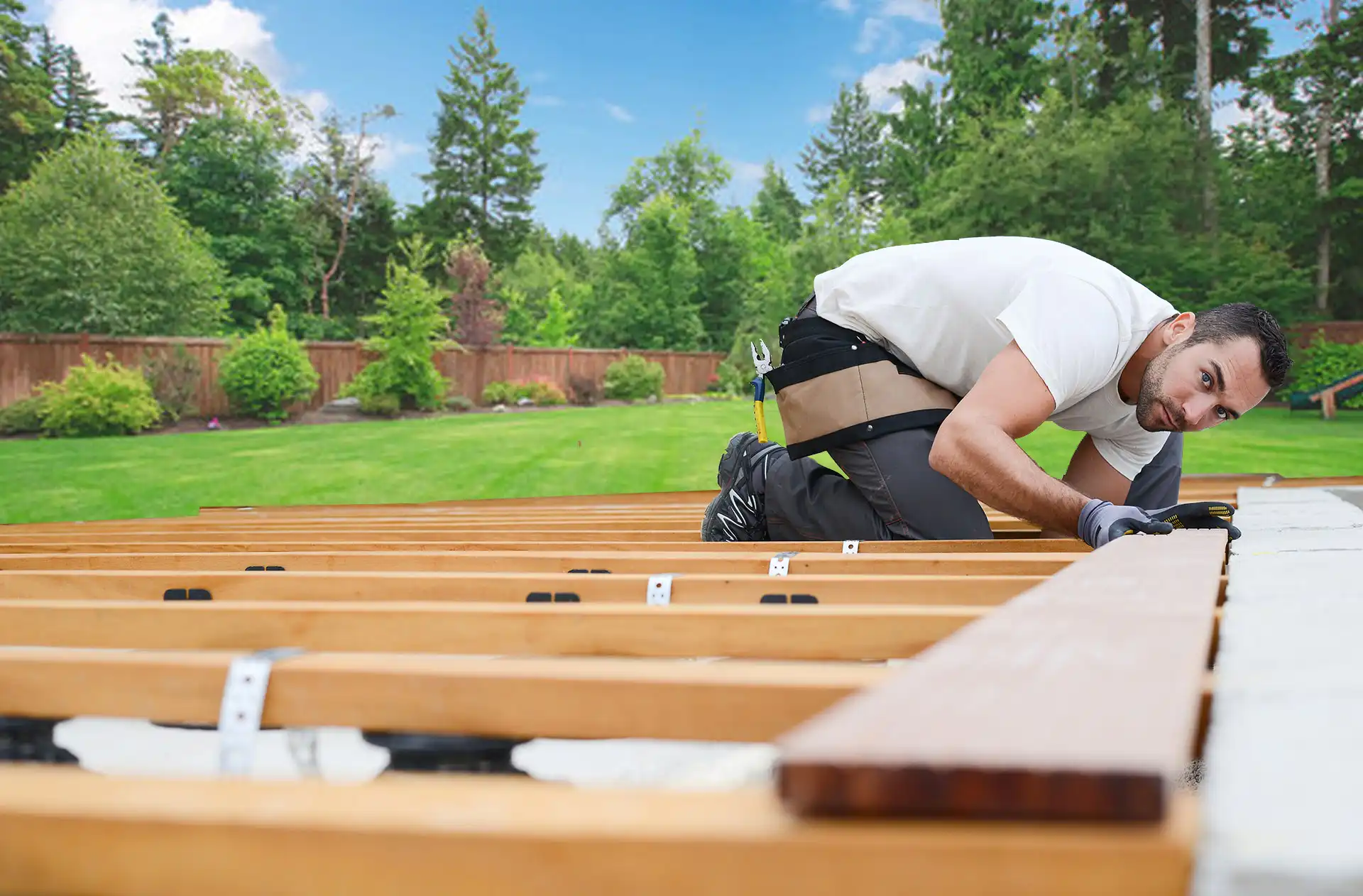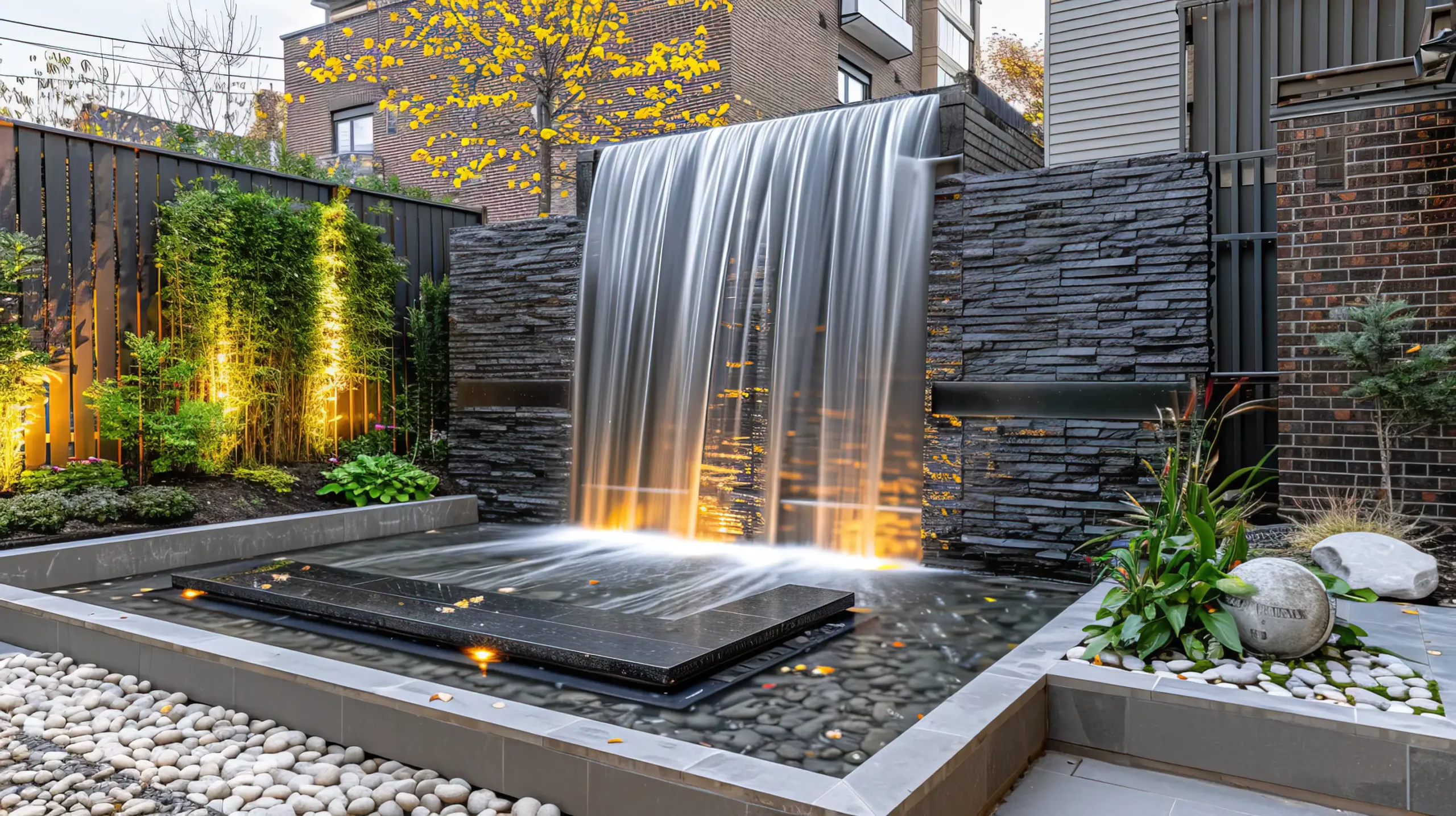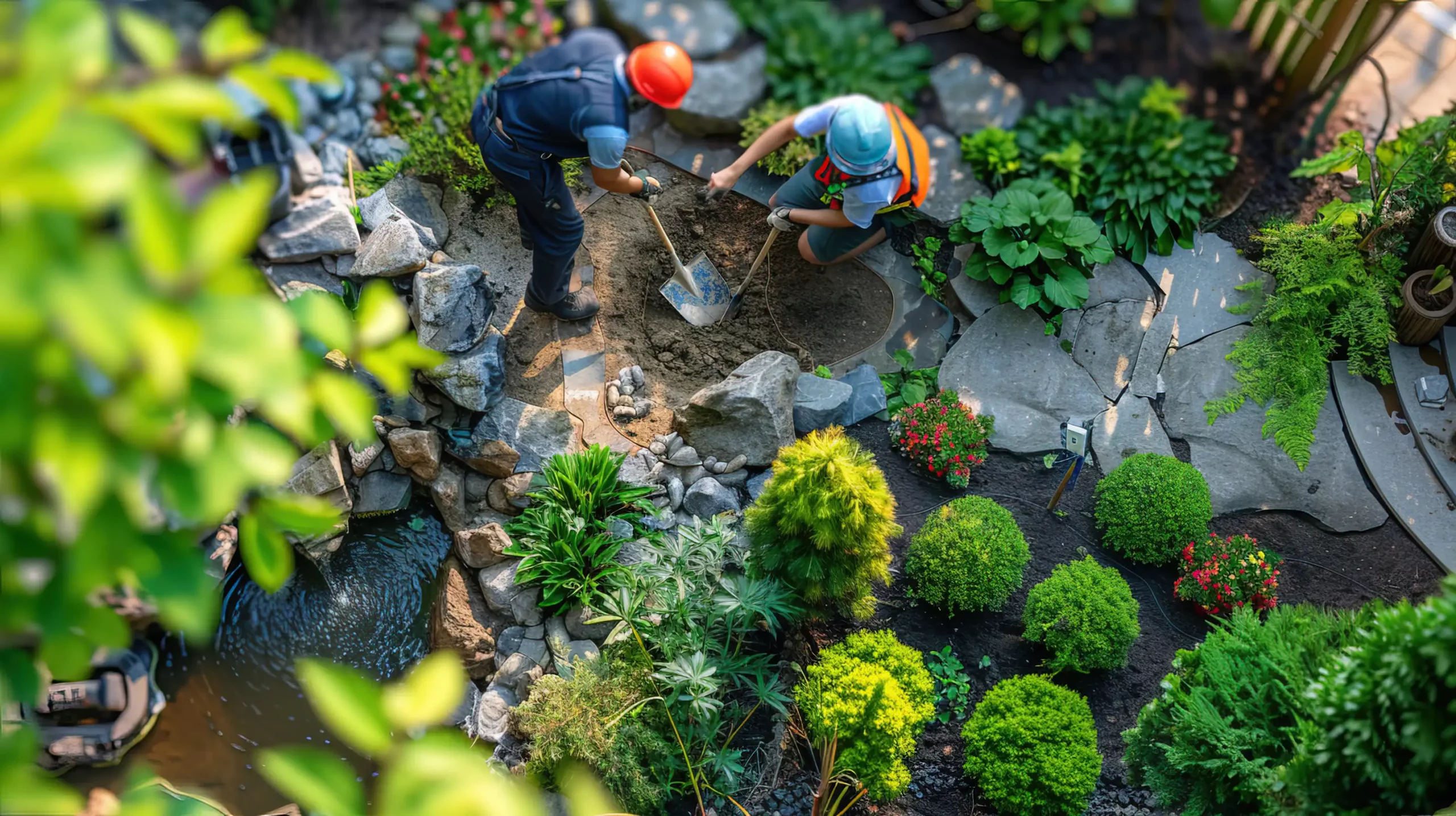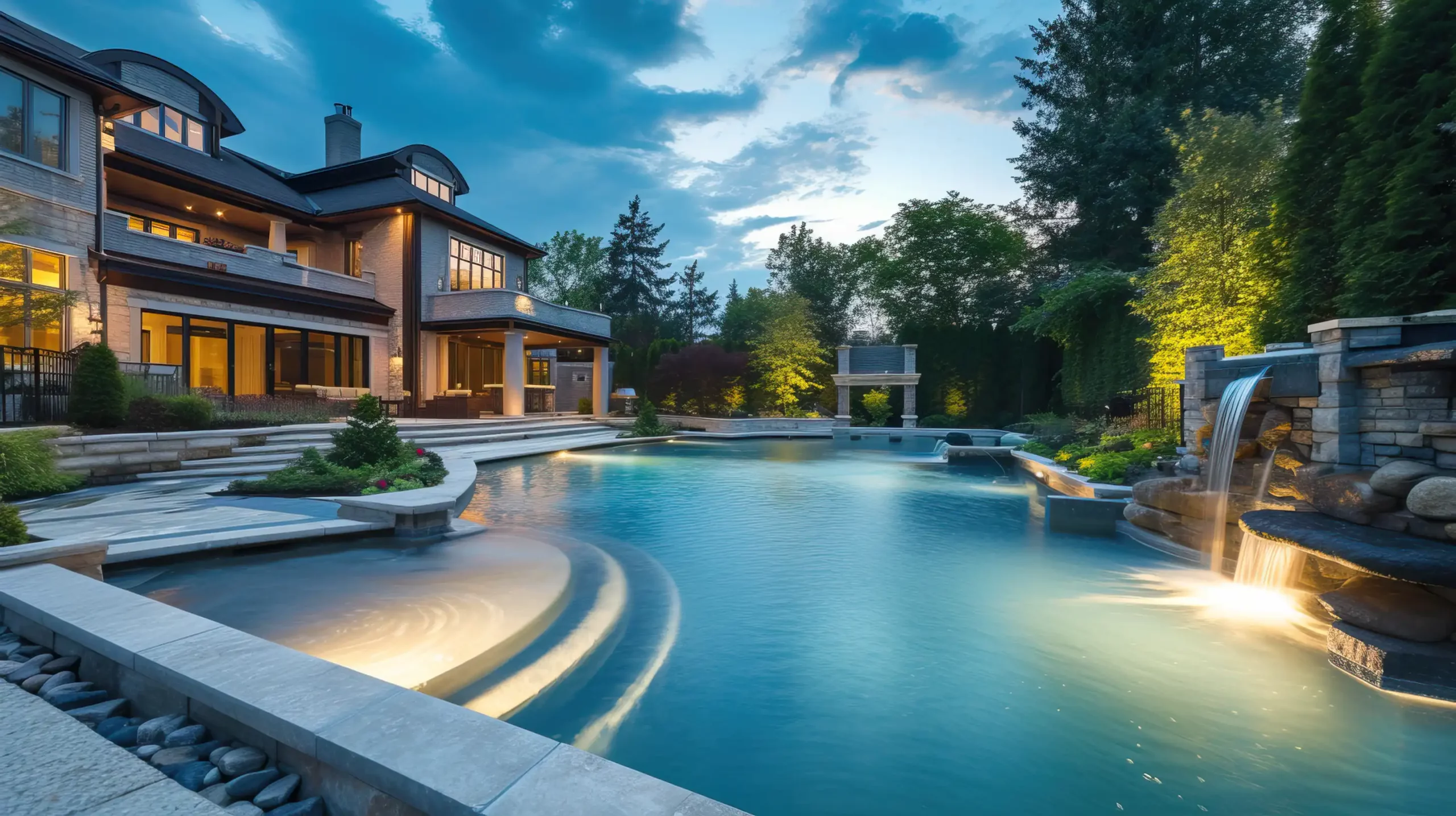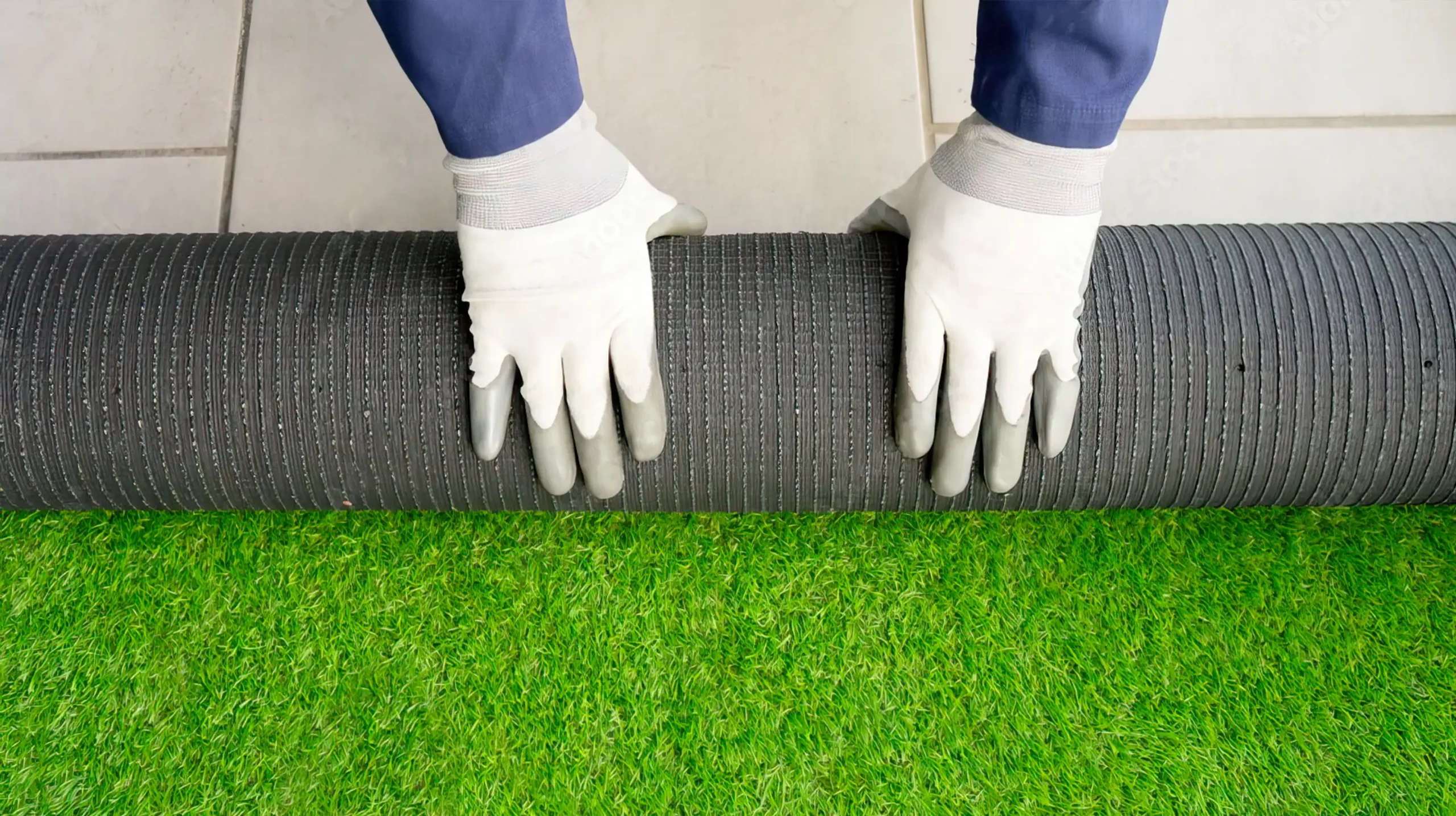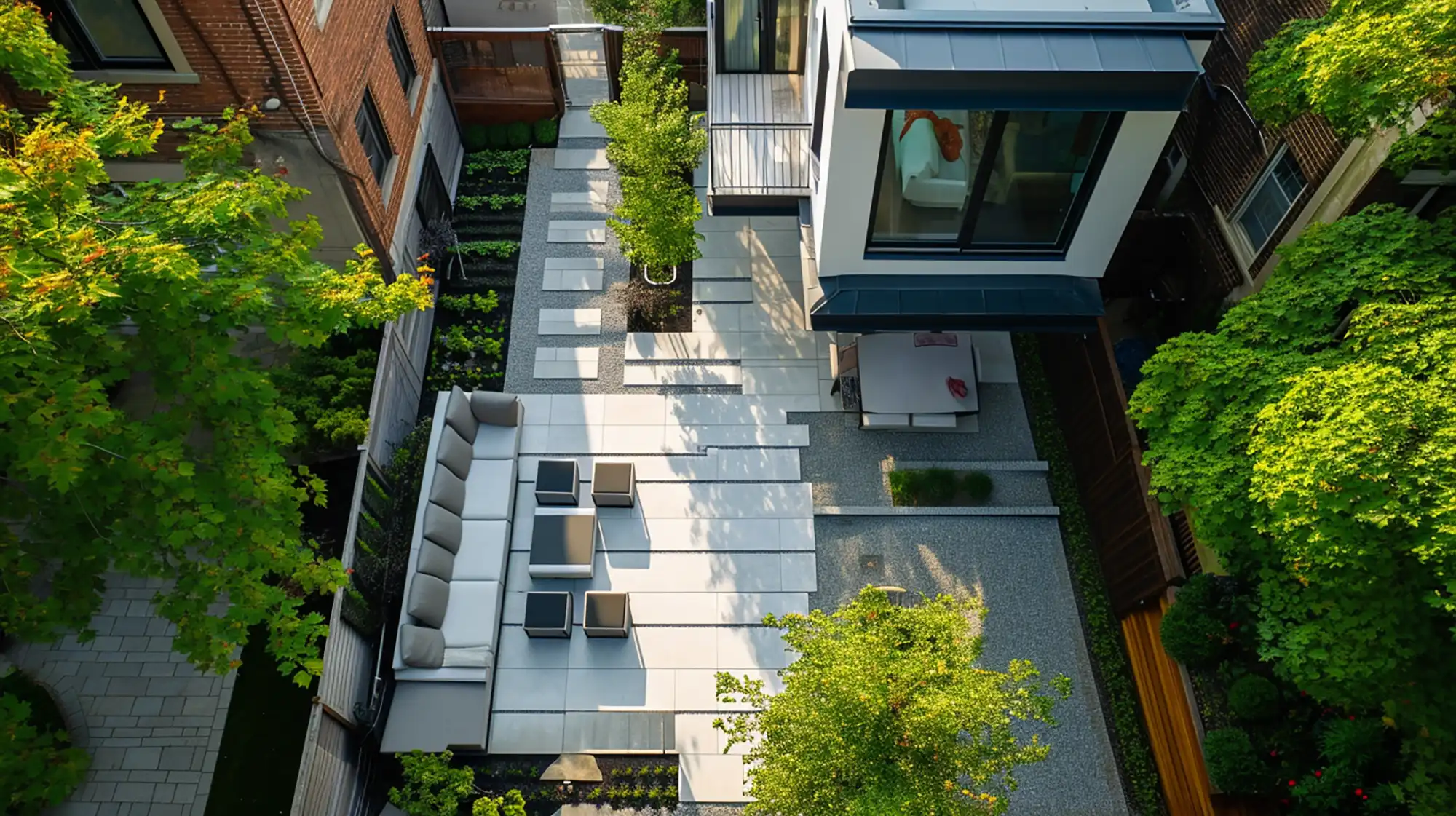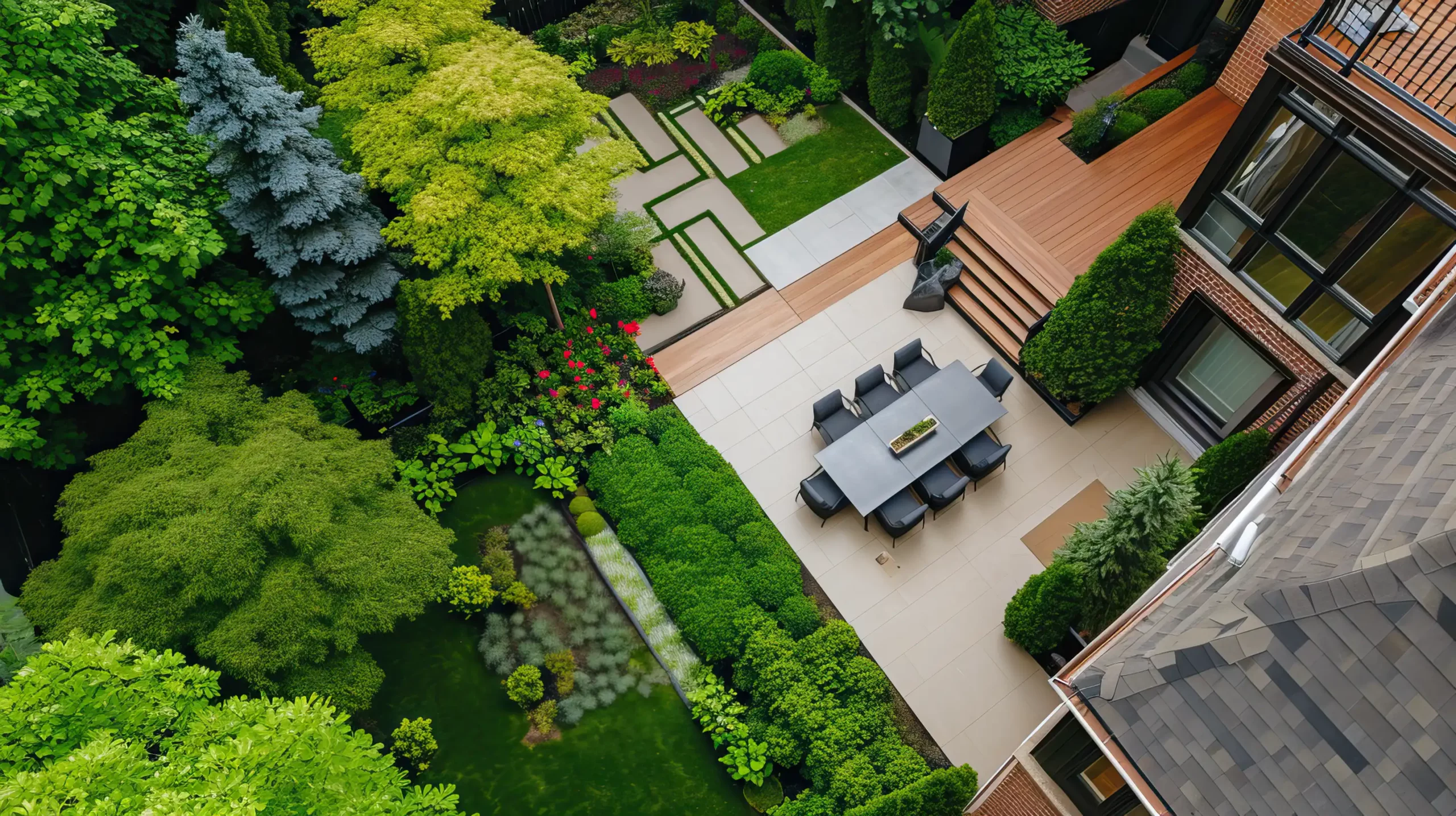Many homeowners cannot complete their backyard dream without the addition of a deck, as they are a fully-functional floor that integrates interior living areas with exterior entertaining spaces. Today, an increasing number of these decks are being constructed of composite materials, while design possibilites remain unlimited. With an increased selection of colours, wood grain patterns, profiles, and material types, the composite decking selection has never been better and is proving to be a wise choice for consumers.
WHAT IS COMPOSITE DECKING?
Composite decking is a relatively new building material made from recycled plastics combined with reconstituted wood fibre, rice hulls, bamboo fibre and other organic materials. It is more uniform and consistent than wood, as well as easier to cut and work with, making composite materials a versatile product for today’s varied and innovative deck designs.
As these materials are not affected by moisture and do not suffer many of the typical problems common with wood decking—including fading, cracking, splitting, splintering, mould, rotting and the need to be treated and sealed—composite decking has become a popular choice for building decks around swimming pools.
ADVANTAGES OF COMPOSITE MATERIALS
While a wooden deck may cost less to build, there are ongoing seasonal costs to maintain and repair it. With a composite deck, the entire investment is up front; the only ongoing costs are minimal, such as annual cleanings. Usually, savings are realized in a short amount of time. Decks constructed of composite materials do not have to be treated, stained or sanded to keep them looking new. Ihis alone can save hundreds or even thousands of dollars over the decks lifespan. As they do not crack, split or rot, composite-decking boards rarely have to be replaced, which also saves money, particularly after the first five to 10 years.
Another advantage to composite decking is its uniform appearance, colour consistency and warranty. Depending on the product, warranties can range anywhere from 15 years to lifetime coverage for things like rot and decay, manufacturing defects and general product failure. This gives the purchaser security in the event there are any defects or issues with the product; with wood, there are typically fewer warranties.
Another key feature of composite deck materials, especially when used around swimming pools and hot tubs, is their design, which prevent slipping in wet conditions. ‘Ihe surface is typically easy on the feet, safe to walk on—even for children in bare feet—and do not heat up under the intense rays of the sun anymore than a deck constructed of wood.
Cleaning and stain removal is also generally easier in comparison to wooden decks.
MATERIALS, FEATURES AND OPTIONS
There are as many as 30 brands of composite decking materials on the market today. Among the various brands there are three types of composite decking material, each with a variety of features and options.
Polyethylene (PEJ-based materials Comprising wood or wood-fibre blends with plastic, PE-based decking materials hold a large share of the market. As it is oil based, the material is a slightly softer plastic lumber, which is easy to work with, but board span between joists is reduced. When the seasons change and temperatures fluctuate, this material will also expand or contract. PE-based materials are also said to resemble wood the most.
Polypropylene (PP)-based materials Containing 50 per cent or more reclaimed hardwood lumber, PP-based decking materials are generally stronger, with greater resistance to expansion and contraction than PE-based materials. For builders, this means joists can be spaced further apart, as board span can be increased. Some products are impregnated with special pigments during the manufacturing process that are designed to protect the colour from ultraviolet (UV) light, fading and wear and tear.
Non-wood plastics
Manufactured with polyvinyl chloride (PVC)- based materials, these decking products are made entirely of plastic and do not have any wood content. Although PVC-decking products
can be manufactured to resemble wood, similar to PE-based materials, design considerations, such as joist spacing and board spans, must be kept in mind. Unlike wood, PVC-decking materials will not stain or absorb water.
SOLID, HOLLOW OR RIBBED PROFILES
Composite decking is available in solid, hollow or ribbed profiles. Solid profiles provide a stronger material, resemble the look of real wood and are easier to work with, as edges can be finished simply by using a saw or router. Hollow and ribbed profiles are lighter and less likely to expand or contract, but must be finished with special trims and end caps. Some composites are also available in a tongue-and-groove (T&G) profiles.
FINISHES AND TEXTURES
Most composite boards are uniform in colour and available in various finishes and textures, such as smooth, brushed or wood- grain surfaces. A good texture is important on pool decks, e.g. composite decking with an embossed wood-grain finish offers three times the anti-skid characteristic of wood and a splinter-free surface. In addition to the embossed wood-grain finish, composites can also be manufactured with a colour- streaking process to better replicate the look of hardwoods.
FASTENING
Today’s composite decking materials, can be fastened in many ways, including a variety of hidden fastening systems, which give a cleaner look and eliminate staining problems associated with nails and screws. It is important to follow the manufacturer’s recommendations when it comes to installation, e.g. some composite decking cannot be nailed, while others must be pre-drilled before being fastened to the frame with screws.
THE CURRENT GENERATION OF COMPOSITE DECKING MATERIALS ARE ALSO DESIGNED TO HAVE A MORE NATURAL LOOK WITH BETTER RESISTANCE TO STAINING AND FADING.
OPTIONAL PROFILES FOR TRIM, SKIRTING AND RAILING
Many manufacturers have other profiles available, such as railings, fascia, trim, moulding, risers and end caps. ‘These allow the builder to complete the project and add finishing details without using other types of materials.
IMPROVING TECHNOLOGY
When composite decking was introduced, manufacturers made claims that it was maintenance free and would not stain or fade. The truth is, this material is not perfect and does have its own problems.
Certain products have been susceptible to mould, as most composites contract and expand with temperature change. Some can become stained, which can be difficult to address, while all composites can become scratched, scuffed or fade to some degree. Composite materials do have their limitations, which are generally outweighed by the advantages. Even though composites will never entirely replace the natural beauty and feel of real wood, because they are man-made, they can be improved. Today’s composite decking materials are generally manufactured with solid PVC ingredients and contain little or no organic filler, making them less susceptible to mould caused by moisture and other elements. Ihe current generation of composite decking materials are also designed to have a more natural look with better resistance to staining and fading. Harder surfaces do not become scratched or scuffed as much as composites made with organic fibres. Additionally, most composite boards have been weather tested to withstand extreme climates, making them a viable option for any Canadian region.
Composite decking is poised to become a mainstream product within the next 10 years. As more and more consumers become aware of the benefits of this decking material, and manufacturers improve its quality, it will become a more likely choice for any consumer.
With more than 25 years in the building materials Industry and 12 years In the deck business, Stan Weiland is the general manager of The Deck Store, located in 454 South Service Rd W, Oakville, ON. He can be reached at [email protected].
Visit our website to find a location closest to you, or to contact a deck designer today!
Follow us on Facebook and Instagram for more deck design ideas.

